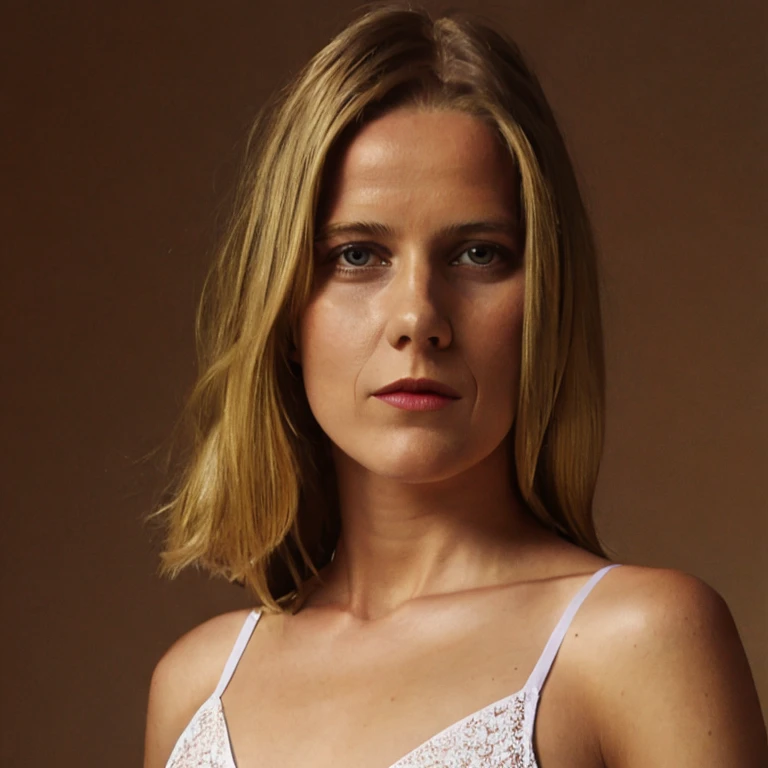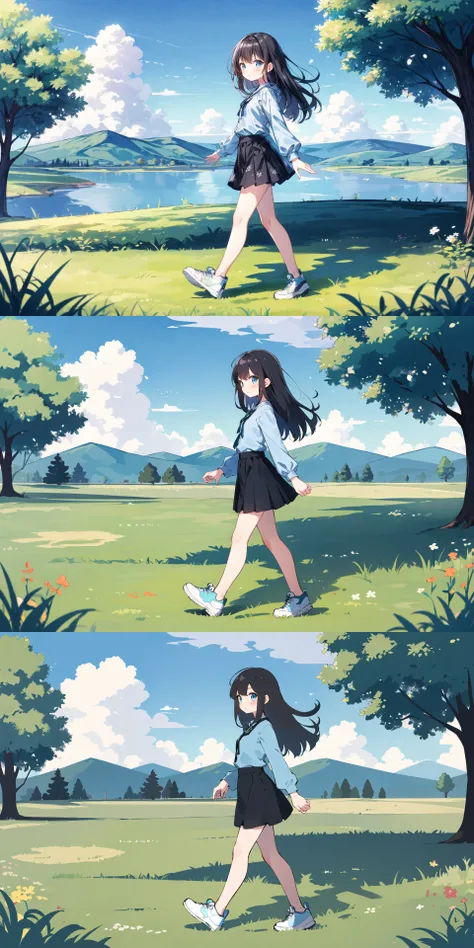Arafed woman in a bikini sitting on the ground in front of a tent
![A tipi is distinguished from other conical tents by the smoke flaps at the top of the structure.[24][25][26] The tipi is durable,[27] provides warmth and comfort in winter,[28] is cool in the heat of summer,[note 2] and is dry during heavy rains.[29][30] Tipis can be disassembled and packed away quickly when people need to relocate and can be reconstructed quickly upon settling in a new area.[31][32][note 3] Historically, this portability was important to Plains Indians with their at-times nomadic lifestyle.[33] Tribes would have well-organized camp circles of family units living in multiple tipis arranged in order depending on rank or roles in the family unit, community, or ceremony.[34] Generally, the door and camp openings face east in the direction of the sunrise.[34]
A typical family tipi is a conical, portable structure with two adjustable smoke flaps, multiple poles (historically from 12 to 25 ft or 3.7 to 7.6 m long) called lodge poles.
Lewis H. Morgan noted that tipi frames were 13 to 15 poles that were 4.6 to 5.5 metres (15–18 ft) tall. These poles, "after being tied together at the small ends, are raised upright with a twist so as to cross the poles above the fastening."[35] The builders pull the lower ends out to form a circle about 3.0 metres (10 ft) in diameter on the ground. They stretch a covering of tanned and untanned buffalo hides, sewn together, over the frame, which they then secure with stakes at the base. "At the top there is an extra skin adjusted as a collar, so as to be open on the windward side to facilitate the exit of the smoke. A low opening is left for a doorway, which is covered with an extra skin used as a drop. The fire-pit and arrangements for beds are the same as in the Ojibwa lodge, grass being used in the place of spruce or hemlock twigs."[35]
Lodgepole pine is the preferred wood in the Northern and Central Plains and red cedar in the Southern Plains.[36] Tipis have a detachable cover over the structure.](https://image.cdn2.seaart.me/2024-07-07/cq5e5nle878c73ab8or0/5abe971155e4abc38d584bdf4943e57b1c9e520a_high.webp)
提示词
复制
A tipi is distinguished from other conical tents by the smoke flaps at the top of the structure
.
[24][25][26] The tipi is durable
,
[27] provides warmth and comfort in winter
,
[28] is cool in the heat of summer
,
[note 2] and is dry during heavy rains
.
[29][30] Tipis can be disassembled and packed away quickly when people need to relocate and can be reconstructed quickly upon settling in a new area
.
[31][32][note 3] Historically
,
this portability was important to Plains Indians with their at-times nomadic lifestyle
.
[33] Tribes would have well-organized camp circles of family units living in multiple tipis arranged in order depending on rank or roles in the family unit
,
community
,
or ceremony
.
[34] Generally
,
the door and camp openings face east in the direction of the sunrise
.
[34]
A typical family tipi is a conical
,
portable structure with two adjustable smoke flaps
,
multiple poles (historically from 12 to 25 ft or 3
.
7 to 7
.
6 m long) called lodge poles
.
Lewis H
.
Morgan noted that tipi frames were 13 to 15 poles that were 4
.
6 to 5
.
5 metres (15–18 ft) tall
.
These poles
,
"after being tied together at the small ends
,
are raised upright with a twist so as to cross the poles above the fastening
.
"[35] The builders pull the lower ends out to form a circle about 3
.
0 metres (10 ft) in diameter on the ground
.
They stretch a covering of tanned and untanned buffalo hides
,
sewn together
,
over the frame
,
which they then secure with stakes at the base
.
"At the top there is an extra skin adjusted as a collar
,
so as to be open on the windward side to facilitate the exit of the smoke
.
A low opening is left for a doorway
,
which is covered with an extra skin used as a drop
.
The fire-pit and arrangements for beds are the same as in the Ojibwa lodge
,
grass being used in the place of spruce or hemlock twigs
.
"[35]
Lodgepole pine is the preferred wood in the Northern and Central Plains and red cedar in the Southern Plains
.
[36] Tipis have a detachable cover over the structure
.
信息
模型 & 风格

模型
epiCRealism

LORA
DonnaMatura

LORA
Detail Tweaker LoRA (细节调整LoRA)

LORA
epiCRealLife Enhancer
#写实
#美腿
共 0 条评论
0
0
0









